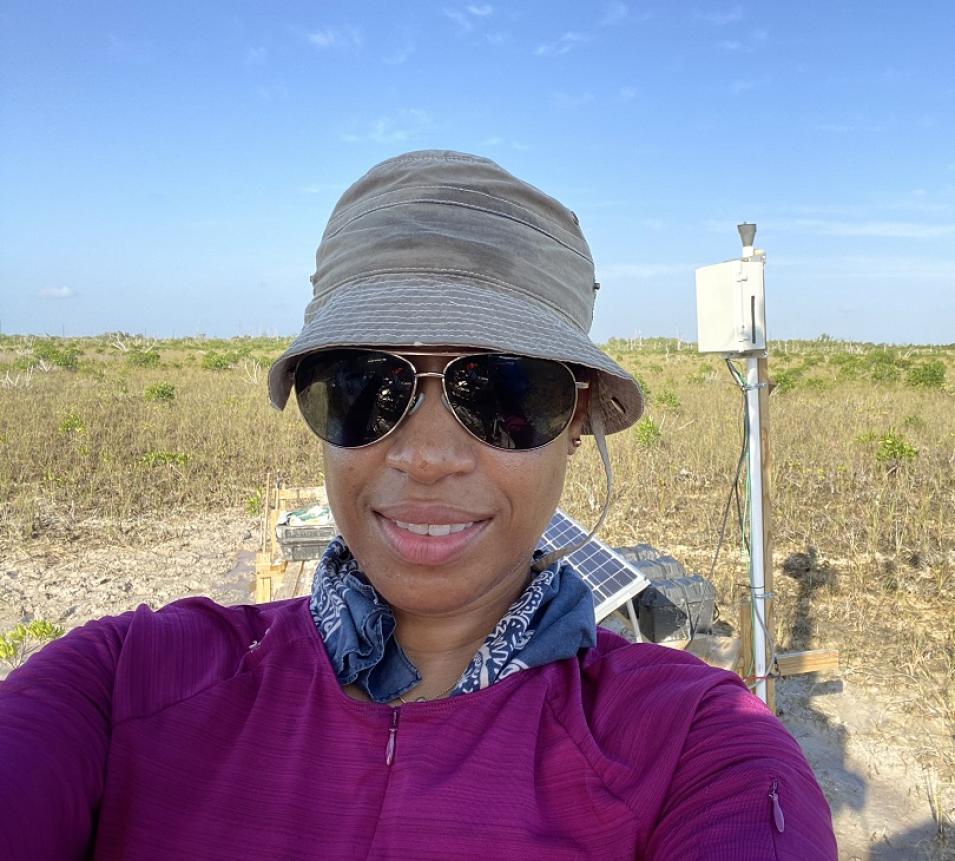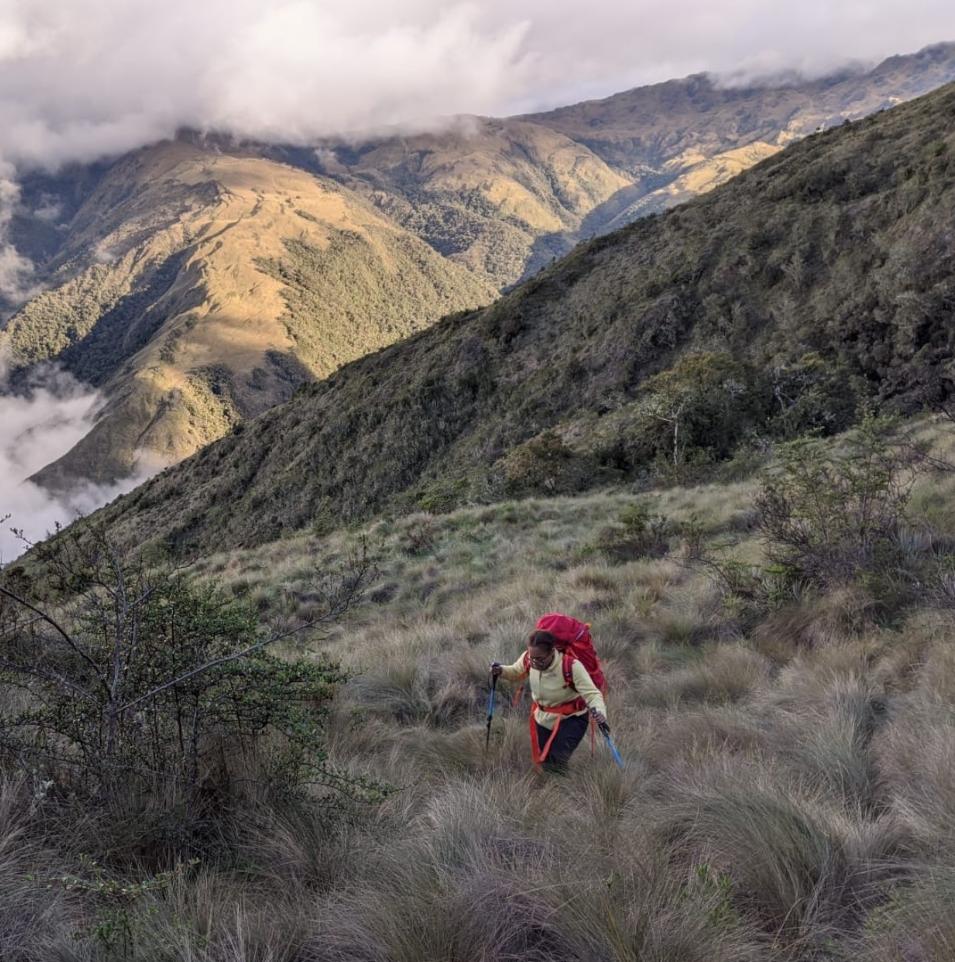Dr. Sparkle Malone, Assistant Professor, Department of Biological Science, Florida International University, Miami, FL
Research interests: Malone uses remotely-sensed data, eddy covariance, and model simulations to study how a changing climate and disturbances influence ecosystem structure and function.
Research highlights: If Dr. Sparkle Malone leaves her office at Miami’s Florida International University by the north gate, she can travel in one of two directions on U.S. Highway 41. A right turn takes her east on a short drive to the skyscrapers surrounding the most populous city in Florida. During 2016, Miami released approximately 1,210,811 metric tons of carbon dioxide equivalents (CO2e) community-wide, according to the most recent figures available from Miami Beach Rising Above, a website providing information about Miami’s climate control and sustainability efforts. The website notes that this amount is equivalent to the emissions from more than 250,000 passenger vehicles driven for one year.
If Malone turns left on Highway 41, though, heading west across the Ronald Reagan Turnpike and Krome Avenue, she soon finds herself in one of the planet’s most ecologically diverse areas – the Florida Everglades. Recent research indicates that mangrove forests in the Everglades store carbon worth between $2 billion and $3.4 billion, a value that reflects the estimated cost of restoring freshwater flow to preserve the mangroves. The ability of the 1.5-million-acre Everglades ecosystem to act as a carbon sink and prevent the release of carbon into the atmosphere figures prominently in not only Malone’s research, but also in a changing global climate.
A primary NASA EOSDIS source for data used by Malone is NASA’s Oak Ridge National Laboratory Distributed Active Archive Center (ORNL DAAC). Located in Oak Ridge, TN, NASA’s ORNL DAAC is a partnership between NASA and the U.S. Department of Energy. The DAAC archives and distributes EOSDIS data related to ecology, terrestrial biogeochemistry, and environmental processes.
Along with various datasets distributed by the ORNL DAAC, Malone uses several resources available through the DAAC. These include the Moderate Resolution Imaging Specrtoradiometer (MODIS) and Visible Infrared Imaging Radiometer Suite (VIIRS) Land Products Global Subsetting and Visualization Tool and a system called Daymet. The subsetting and visualization tool provides selected MODIS/VIIRS land products that can be used for validating models and remote-sensing products as well as for characterizing field sites. Daymet provides near-surface meteorological information for remote areas or for areas with limited instrumentation throughout continental North America (along with Hawaii and Puerto Rico).
Malone also acquires EOSDIS data from NASA’s Land Processes DAAC (LP DAAC). LP DAAC is a partnership between NASA and the USGS, and archives and distributes EOSDIS data related to land cover and land use, including MODIS land data products.
In a recent study, Malone was part of a team investigating how increases in water level and periods of inundation contribute to changes in CO2 storage in a freshwater wetland ecosystem in Everglades National Park. Between 2015 and 2017, a combination of higher than normal precipitation along with water management activities that altered the flow of freshwater in canals adjacent to the park led to an extended inundation period lasting almost 18 months. This unusually long period of inundation enabled the research team to test the ecosystem’s response to abnormal inundation scenarios that may occur more frequently with climate change and the impact of this on carbon storage.

